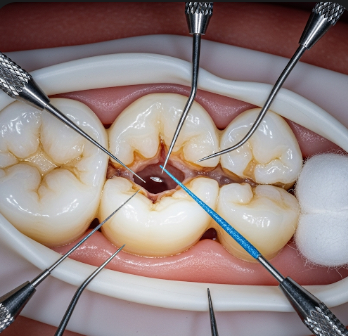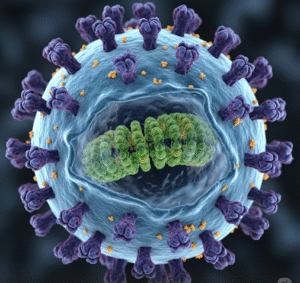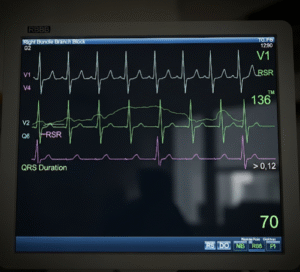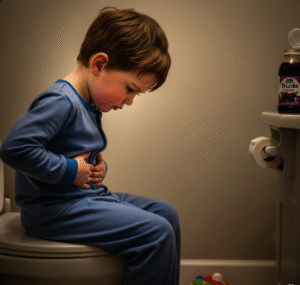Overview
Pulpectomy is a dental procedure performed to remove infected or inflamed pulp tissue from the root canals of a tooth, usually in children or adults with severe tooth decay or trauma. The procedure aims to preserve the tooth, relieve pain, and prevent the spread of infection.
South Korea is known for advanced pediatric and endodontic dental care, modern equipment, and highly skilled dentists, making it a safe and effective destination for pulpectomy treatments.
What is Pulpectomy?
Pulpectomy involves the complete removal of the pulp tissue from the crown and root canals of a tooth, followed by cleaning, shaping, and filling the canals. Key features include:
✔ Removal of infected pulp to prevent further infection or abscess.
➔ Preservation of the tooth structure to maintain chewing function.
● Temporary or permanent filling placed depending on the treatment plan.
★ Commonly performed in primary (baby) teeth to retain the tooth until natural exfoliation.
Pulpectomy is typically indicated for irreversibly inflamed or necrotic pulp and is an alternative to tooth extraction.
What are the Benefits?
Pulpectomy offers several advantages:
✔ Relieves pain and discomfort caused by pulp infection.
➔ Prevents the spread of infection to surrounding tissues and permanent teeth.
● Preserves natural tooth structure, maintaining proper chewing and alignment.
★ Minimally invasive compared to extraction and replacement.
➤ Promotes proper dental development in children by retaining primary teeth.
Procedure Details
1) How should I prepare for Pulpectomy?
Preparation ensures safety and effectiveness:
✔ Dental examination: X-rays and clinical evaluation to assess pulp condition.
➔ Medical history review: Identify allergies, medications, or systemic conditions.
● Oral hygiene: Clean teeth before the procedure.
★ Patient counseling: Discuss procedure, benefits, risks, and post-operative care.
➤ Pain management planning: Local anesthesia is typically used; sedation may be considered for anxious children.
2) What happens during the procedure Pulpectomy?
Pulpectomy is usually performed under local anesthesia in a dental clinic:
✔ Anesthesia administration: Numbs the affected tooth and surrounding area.
➔ Access opening: Dentist creates an opening in the tooth to reach the pulp chamber.
● Pulp removal: Infected or inflamed pulp tissue is removed from the crown and root canals.
★ Cleaning and shaping: Root canals are cleaned, disinfected, and shaped for filling.
➤ Filling and sealing: Canals filled with resorbable or permanent material; crown may be restored with temporary or permanent restoration.
Korean dental clinics often use magnification, rotary instruments, and digital imaging to ensure precision and success.
3) What happens after Pulpectomy?
Post-procedure care focuses on healing, comfort, and prevention of complications:
✔ Pain management: Mild discomfort may be treated with over-the-counter analgesics.
➔ Oral hygiene: Gentle brushing and avoidance of the treated tooth for a few days.
● Diet: Soft foods recommended initially.
★ Follow-up: Dentist checks for healing, infection resolution, and restoration stability.
➤ Further treatment: Permanent restoration or crown may be placed later to protect the tooth.
Risks / Benefits
Possible Risks:
✔ Mild post-operative pain or swelling
➔ Temporary sensitivity or discomfort
● Infection if canals are not thoroughly cleaned
★ Fracture of tooth structure during or after treatment
➤ Need for retreatment if pulp infection persists
Major Benefits:
✔ Relieves pain and eliminates infection
➔ Preserves natural tooth structure
● Maintains proper dental development in children
★ Minimally invasive alternative to extraction
➤ Promotes long-term oral health and function
Recovery and Outlook
✔ Immediate recovery: Patient can usually resume normal activity after anesthesia wears off.
➔ Mild discomfort: Pain or tenderness may persist for 1–3 days.
● Diet: Soft foods recommended; avoid hard chewing on treated tooth.
★ Follow-up: Regular dental visits to monitor healing and ensure restoration integrity.
➤ Long-term outcome: Most pulpectomy procedures are successful in preserving tooth function until natural exfoliation or permanent replacement.
When To Call the Doctor
Contact your dentist immediately if you notice:
✔ Severe or worsening pain
➔ Swelling or pus formation
● Persistent sensitivity or discomfort
★ Tooth fracture or damage
➤ Fever or signs of systemic infection
Best Korea Option / Process
South Korea provides expert pulpectomy care with:
✔ Leading dental hospitals: Seoul National University Dental Hospital, Samsung Medical Center Dental Clinic, Yonsei Severance Dental Hospital.
➔ Advanced endodontic equipment: Rotary instruments, digital imaging, and magnification tools.
● Experienced dentists: Skilled in pediatric and adult pulpectomy procedures.
★ Comprehensive care: Pain management, restoration, and follow-up for optimal outcomes.
➤ Medical tourism support: Translation, travel coordination, and continuity of care for international patients.
✅ Highlights:
✔ Pulpectomy removes infected pulp to relieve pain and prevent infection
➔ Preserves natural tooth structure and dental function
● Minimally invasive with short recovery
★ Risks include mild pain, infection, or need for retreatment
➤ Korean dental hospitals provide advanced tools, expert dentists, and comprehensive post-operative care













